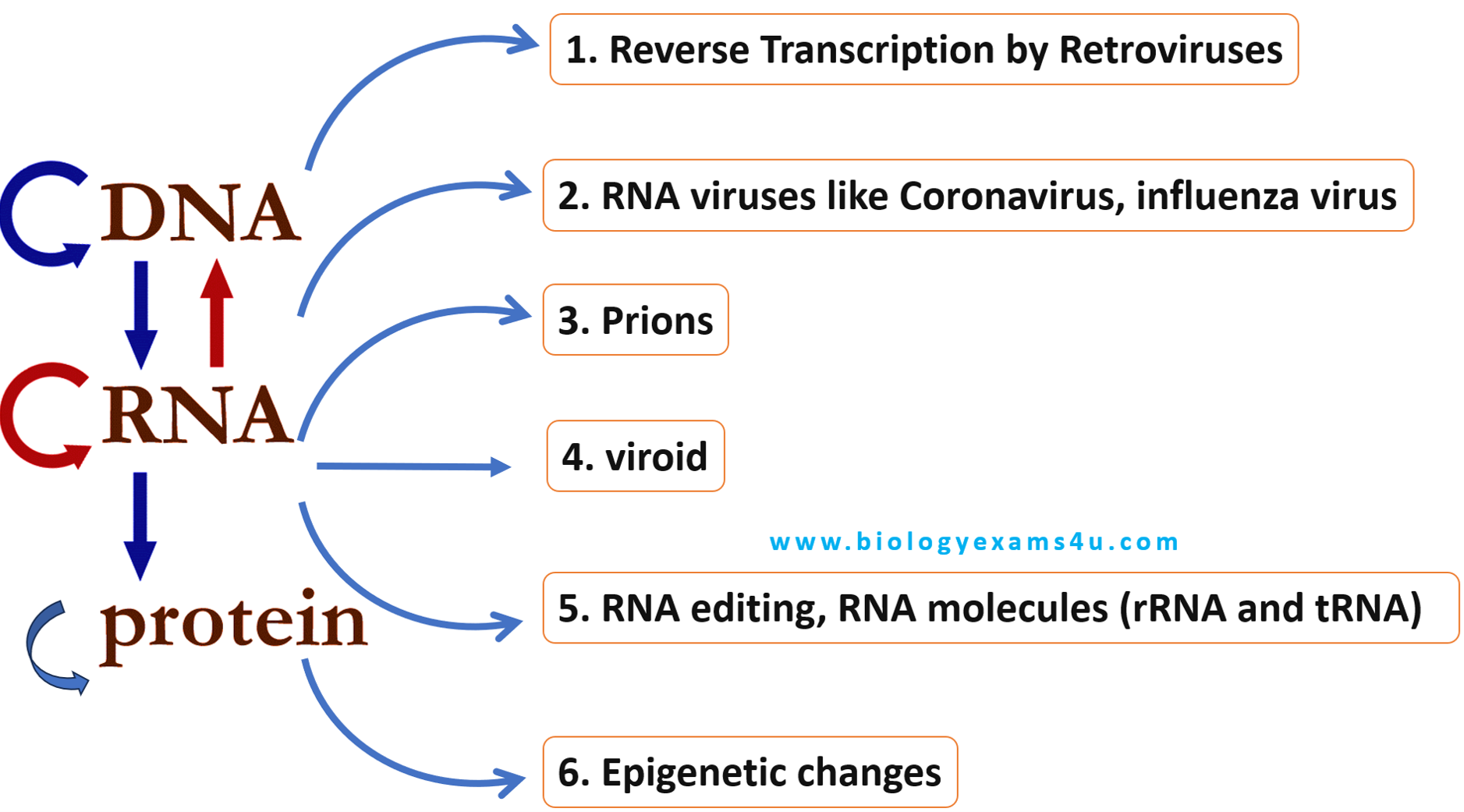The Central Dogma of molecular biology, proposed by Francis Crick, states that genetic information flows from DNA to RNA to protein. However, there are several known exceptions to this rule:
You can watch our video on this topic here.
1. Reverse
Transcription: Certain
viruses, such as retroviruses (HIV is a well-known example), use an enzyme
called reverse transcriptase to convert their RNA genomes into DNA. This is against
the Central Dogma, which states that information cannot flow from RNA back to
DNA.
2. RNA
Viruses: Some viruses, like the influenza
virus and coronavirus, store their genetic information in RNA, not DNA. They
replicate by a process called replication, which involves the synthesis of a
new RNA strand from an RNA template using an RNA dependent RNA polymerase
enzyme.
3. Prions: Prions are infectious proteins that can
transmit information, despite having no nucleic acid genome; either DNA or RNA.
They cause several neurodegenerative diseases in animals, including
Creutzfeldt-Jakob disease in humans, mad cow disease and scrapie disease in
sheep. Prions replicate by converting normal proteins into the infectious prion
form with a different structure, bypassing the need for nucleic acids entirely.
4. Viroid: are infectious single stranded circular RNAs
that cause several diseases in plants like Potato spindle tuber disease. These
infectious RNAs can replicate by itself without the need of a protein of DNA.
5. RNA
Editing: In some organisms, the RNA
transcript can be altered by enzymes after it has been synthesized. This can
result in a protein that is not directly encoded by the DNA sequence. There may
be addition or deletion of nucleotide in mRNA transcript leading to the
production of different related proteins. Another mechanism is alternative
splicing in eukaryotes, where exons in mRNA are joined in different combinations
leading to the synthesis of many related proteins from a single gene without
changing the DNA sequence.
RNA
molecules like rRNA and tRNA
6. rRNA
(ribosomal RNA): rRNA is a
component of the ribosome, the protein manufacturing machinery of all living
cells. The Central Dogma states that the flow of genetic information in a cell
is from DNA to RNA to protein. However, rRNA does not code for proteins.
Instead, it forms the core of the ribosome’s structure and catalyzes protein
synthesis.
7. tRNA
(transfer RNA): tRNA is
responsible for bringing amino acids to the ribosome during the process of
translation. Like rRNA, tRNA does not code for proteins. Instead, it serves as
the link between the mRNA codon and the amino acid. Each tRNA molecule has an
anticodon that pairs with a specific mRNA codon, and it carries the
corresponding amino acid.
8. Epigenetic
Changes: Epigenetic changes involve modifications to
DNA or associated proteins, without changing the DNA sequence, that alter gene
activity. Examples include DNA methylation and histone modification. DNA
methylation is the addition of methyl group to cytosine residues causing
chromatin condensation and suppresses gene expression. Histone acetylation is
the addition of acetyl groups to lysine
residues of the histone causing chromatin relaxation and often enhances gene
expression.

